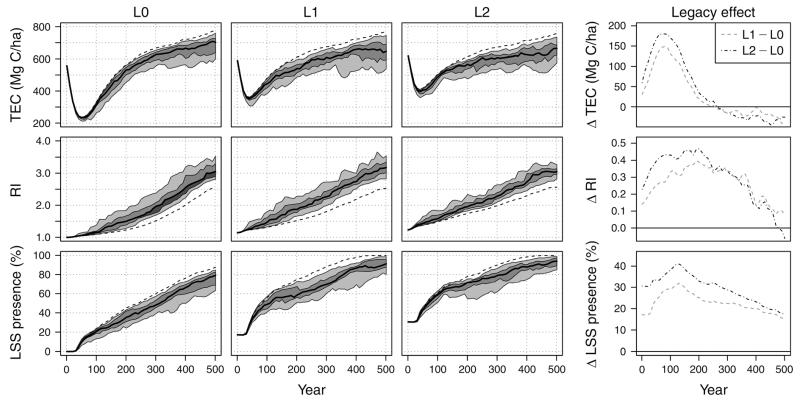Fig. 1.
Trajectories of ecosystem functioning (total ecosystem carbon, TEC), structure (rumple index, RI [see Materials and methods: Study design and analysis]), and composition (presence of late-seral species, LSS) for the 6364-ha H. J. Andrews Experimental Forest landscape under different scenarios of initial legacy (L0, no legacies; L1, remnant trees on 12% of the landscape; L2, remnant trees on 24% of the landscape). For a mean fire return interval of 262 years (scenario F1) the median (heavy line), interquartile range (dark gray area) and 5th–95th percentile range (light gray area) of 25 replicated runs are shown, while the dashed line indicates simulation results assuming undisturbed recovery (i.e., no wildfires burning during the 500-year study period). To assist the visual evaluation of legacy effects, the differences (Δ) of L1 and L2 to L0 (mean trajectories under the F1 disturbance scenario) are shown in the last column of the figure.

